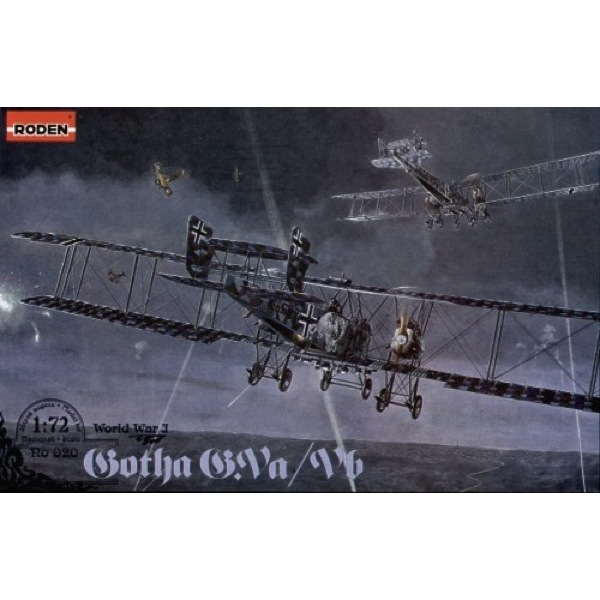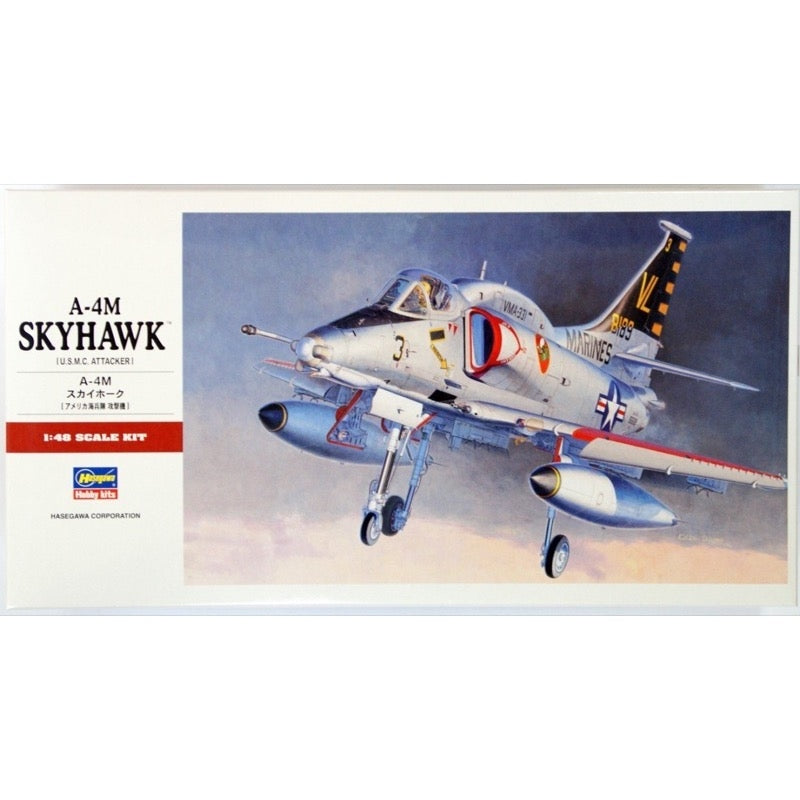
Trumpeter 02890 1/48 Westland Whirlwind
26.00
$
<p>Westland's Tornado British twin-engine heavy fighter. It was the RAF's first single-seat, twin-engine, heavily armed fighter, and it belonged to the same era as the Supermarin's Spitfire and Hawke's Hurricane. It first flew in the late 1930s, and with heavy armament installed, it is still the fastest fighter in service, more than any other. However, what delayed its continued development was that Rolls-Royce's engines were guaranteed to be exported, thus delaying the entire program, and the model was produced in relatively small numbers. Throughout World War II, only two RAF squadrons were equipped with the Tornado, which later served as a successful fighter-bomber until 1943.</p>
<h3>Features</h3>
<ul>
<li>The kit consists of over 70 parts</li>
<li>includes 2 clear parts</li>
<li>fuselage & wing with finely engraved panel lines</li>
</ul>
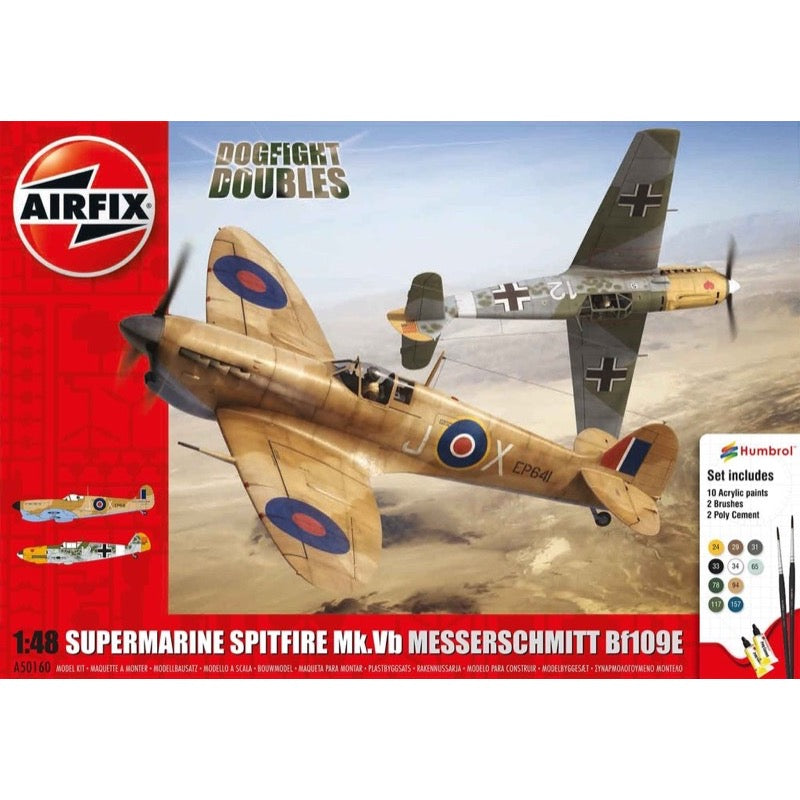
Airfix A50160 1/48 Supermarine Spitfire Mk.Vb Messerschmitt Bf109e Dogfight Double Gift Set
37.00
$
<h3>Between June 1940 and November 1942 the small but strategically important island of Malta, situated in the Mediterranean Sea, became a struggle that was in some ways similar to the Battle of Britain.</h3><p>Between June 1940 and November 1942 the small but strategically important island of Malta, situated in the Mediterranean Sea, became the most heavily bombed place on earth when first Italian and then German bombers attempted to force the island to surrender. Merchant shipping convoys were also attacked in an attempt to prevent the island being re-supplied with food and military equipment.</p><p>Initially Maltas only defending fighter aircraft were outdated Gloster Gladiators and then Hawker Hurricanes but at the height of the battle, cannon armed and tropicalized Spitfire Mk.Vbs were used to intercept the German Junkers Ju88 and Ju87 Stuka dive bombers which were escorted by Messerschmitt Bf109Es. It became a struggle that was in some ways similar to the Battle of Britain. Eventually at the end of 1942, the war in North Africa had been won by the Allies so Malta was no lo of such important to the Axis powers and the bombing stopped allowing the starving civil population to be re-supplied by sea.</p><p>Airfix Gift Sets are ideal for more advanced modellers and include glue, acrylic paints and brushes.</p><h3>Paint Scheme</h3><ul>
<li>Supermarine Spitfire Mk.Vb, No. 229 Squadron, Royal Air Force, Qrendi, Malta, December 1942.</li>
<li>Messerschmitt Bf109E-7, aircraft flown by Oberleutnant Joachim Muncheberg, 7./JG26 Schlageter, Gela, Sicily, Spring 1941.</li>
</ul><h3>Contents</h3><ul>
<li>10 x Acrylic Paints</li>
<li>2 x Brushes</li>
<li>2 x Poly Cement</li>
<li>Supermarine Spitfire Mk.Vb / L: 195mm x W: 232mm - Pieces 151</li>
<li>Messerschmitt Bf109E-7: L: 183mm x W: 205mm - Pieces 107</li>
</ul>
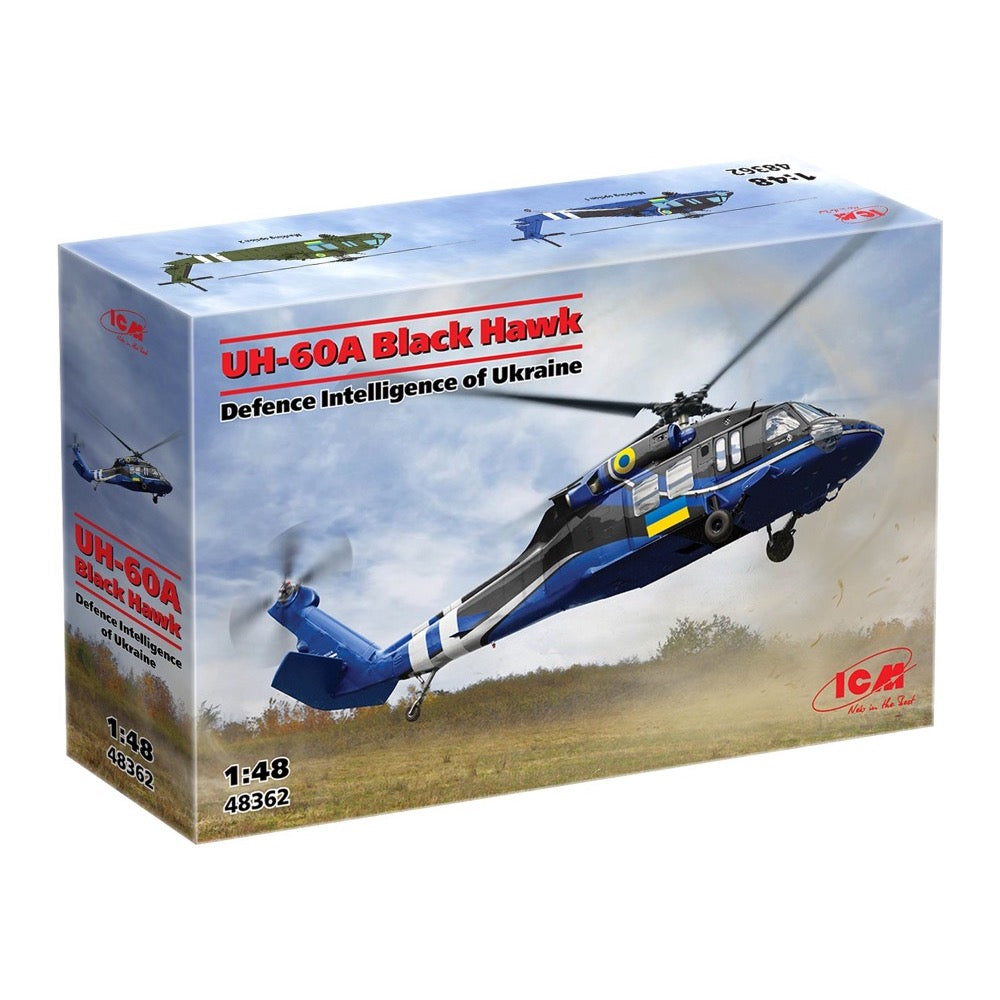
ICM 48362 1/48 UH-60A Black Hawk Defence intelligence of Ukraine
50.00
$
<p>UH-60A Black Hawk<br>Defence Intelligence of Ukraine</p>
<p>Before February 2022, the Ukrainian army and other security forces primarily operated Soviet-made helicopters, with the majority consisting of Mi-8 transport helicopters and Mi-24 combat helicopters. However, in February 2023, photos and videos emerged in the information space showing a helicopter belonging to the Ukrainian Ministry of Defense’s Main Intelligence Directorate, which featured an unusual blue-black livery and Ukrainian identification markings. This helicopter turned out to be a UH-60A Black Hawk, which had undergone certain upgrades and was handed over to the Ukrainian defenders. According to some sources, this helicopter was likely previously owned by the civilian company Ace Aeronautics, which specializes in upgrading transport aircraft cabins. In the spring of 2024, it became known that the combat aviation of the Main Intelligence Directorate received another UH-60A Black Hawk, now painted in the standard olive-green color scheme. Both helicopters are tasked with transporting special forces units to carry out necessary combat missions.</p>
<h3>Specification</h3>
<ul>
<li>Model size (length x width): 414 х 111 mm<br>
</li>
<li>Box size: 410 x 260 x 55 mm<br>
</li>
<li>Number of details: 256<br>
</li>
<li>Markings:<br>
<ul>
<li>UH-60A Black Hawk, Defence intelligence of Ukraine (marking option 1)<br>
</li>
<li>UH-60A Black Hawk, Defence intelligence of Ukraine (marking option 2)<br>
</li>
</ul>
</li>
</ul>
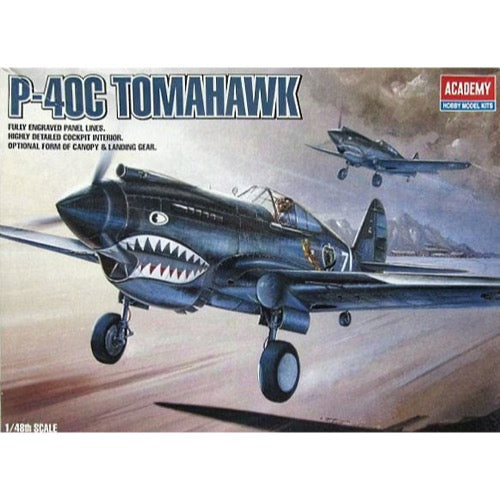
Academy 12280 1/48 P-40C Warhawk
15.00
$
<p>The Curtiss P-40 Warhawk is an American, single-engine, metal fighter-attack aircraft in a low wing configuration with a classic tail. The flight of the prototype took place in 1938, and serial production was carried out in the years 1938-1944. The last of the Hawk family of planes - the Curtiss P-40 Warhawk was, apart from the Republic P-47 and the North American P-51 Mustang, the most widely built American fighter. At the end of production in December 1944, the number of machines exceeded 15,000. The development of the design began in 1937, when the prototype airframe of version 75 was adapted to the installation of the 1167HP Allison V-1710-11 in-line engine. The plane became the first American construction capable of flying at speeds over 483 km / h. The version for the RAF was called the Tomahawk Mk IIA. The planes had self-sealing fuel tanks and two wing-mounted 7.7mm machine guns. The Tomahawk MkIIB were equipped with American radio hardware and armed with six 7.7mm machine guns. Some American P-40s were modernized in 1941 for reconnaissance tasks. They received the designation RP-40. Meanwhile, work on the Hawk 81-A was underway at the Curtiss facility. The changes included the installation of the Allison V-1710-39 engine with a capacity of 1167KM, providing constant power up to a height of 3563 meters, adaptation for installation in the wing of four 12.7mm machine guns and the installation of a fuselage node that could carry one bomb weighing 227 kg or thrown back additional fuel tank. The US Army placed an order for these machines in September 1940, awarding them the designation P-40D. Over the next three years, Curtiss made every effort to expand the application possibilities of the P-40, creating numerous new versions of the aircraft. Despite these efforts, Warhawk's performance was lower than that of contemporary Allied and Axis fighters. Technical data (P-40E version): length: 9.66m, wingspan: 11.38m, height: 3.76m, maximum speed: 580km / h, rate of climb: 11m / s, maximum range: 1100km, practical ceiling: 8800m, armament: fixed - 6 M2 machine guns, caliber 12.7 mm, suspended - up to 900 kg of cargo.</p>
<p>This is an injection-plastic aircraft model kit.</p>
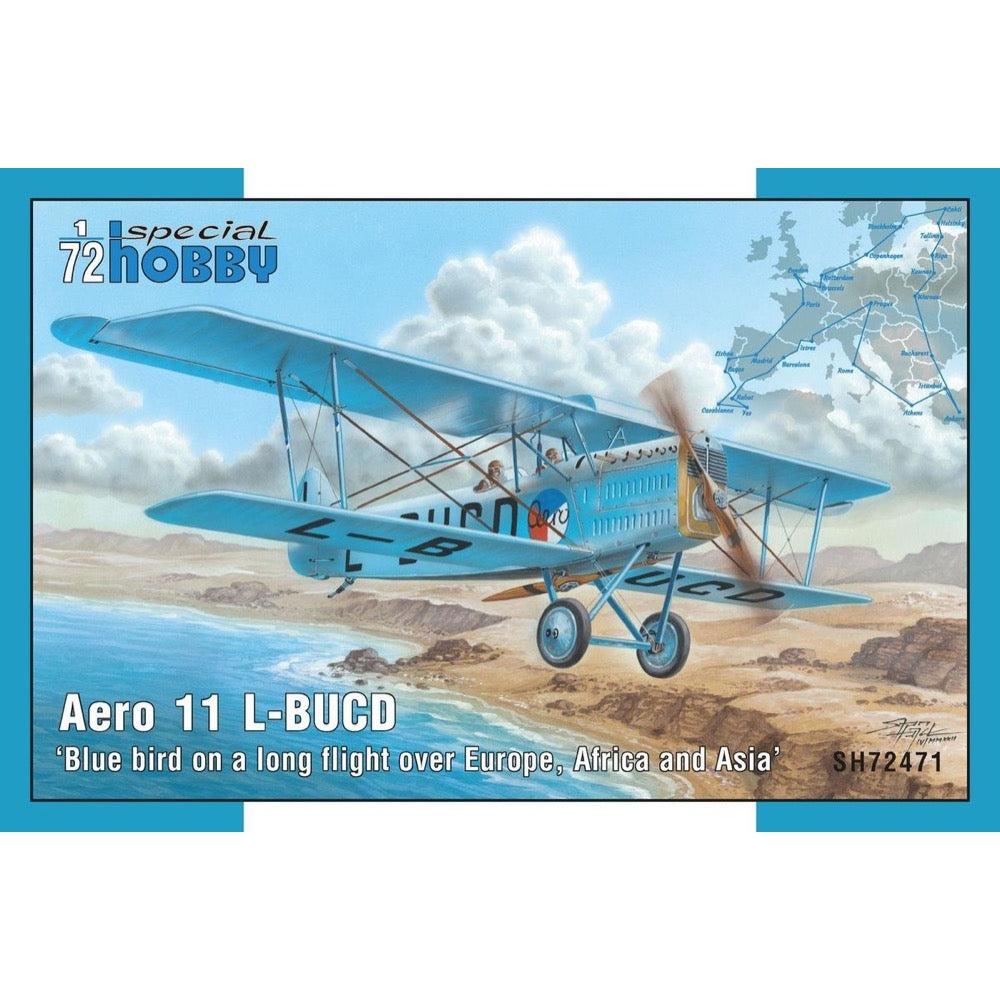
Special Hobby 72471 1/72 Blue Bird On A Long Flight Over Europe Africa and Asia Aero 11 L-BUCD
19.00
$
<h3>Blue bird on a long flyight over Europe, Africa and Asia (Aero Ab-11 L-BUCD) 1/72</h3>
<p>The Aero A-11 was amongst the best Czechoslovak-made aircraft of the 1920s. No wonder then that the type was chosen by the crew of Stabni Kapitan (Sqn/L) Stanovsky and his mechanic Simek for their long distance flight around Europe, North Africa and the Middle East which took place in May and June 1926. For its distinctive colour, their machine was aptly named The Blue Bird. Now it gives us really big pleasure to replicate this important piece of Czech aviation history and release the model kit of the Aero A-11 biplane – even though only in a limited series. The kit contains two styrene sprues, one clear sprue with a pair of windscreens and a sheet of decals</p>
<h3>Features</h3>
<ul>
<li>Limited Batch Only</li>
<li>Attractive Colour Option</li>
<li>Extremely Attractive History Of This Particular Aeroplane</li>
</ul>
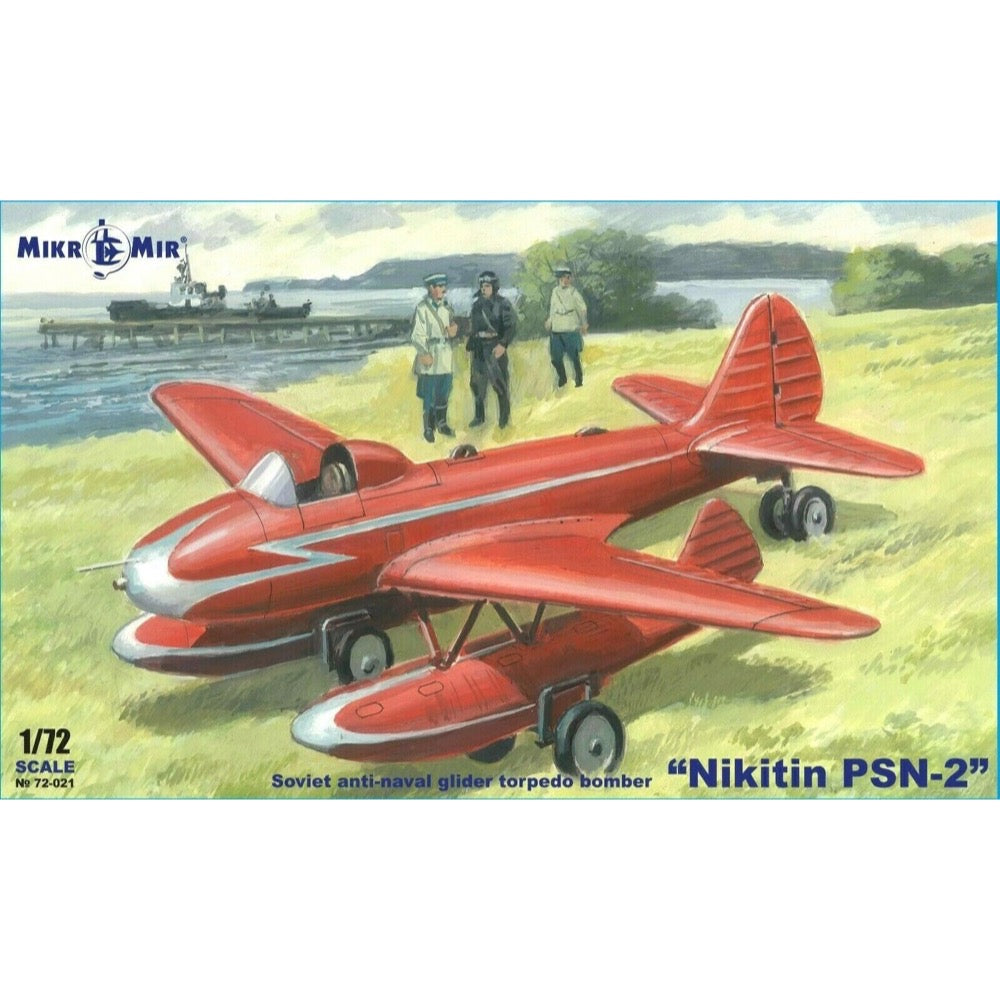
Mikro Mir 72-021 1/72 Nikitin PSN-2 Soviet Anti Naval Glider Torpedo Bomber
13.00
$
<h3>Nikitin PSN-2, Soviet anti-naval glider Torpedo bomber</h3>
<p>The PSN-2 was a glider floatplane designed to test the concept and guidance equipment for a range of guided glider bombs proposed by S.F. Valk in 1933. Constructed of wood, the PSN-2 was a sleek monoplane aircraft with two floats attached to the wing with struts, an open cockpit in the extreme nose of the fuselage and extra fins at the aft end of each float.</p>
<p>The PSN-2 could be carried aloft under a mother-ship or aero-towed off water. Beaching gear was available for manoeuvring the aircraft when not on the water. The planned mission of the pilotless production version of PSN-2 included a 40 km(25.85 mile) range flown at 700 km/h(435 mph), guided to the target with the KVANT Infra-red guidance system.</p>
<p>Flight testing was carried out in 1940, but work was discontinued on 19 July 1940.</p>
<h3>Specifications</h3>
<ul>
<li>Length, mm: 27</li>
</ul>
<h3>This set includes</h3>
<ul>
<li>2 sprues with parts</li>
<li>1 frame of transparent plastic (canopy)</li>
<li>photo-etched parts</li>
<li>mask for model</li>
<li>scheme for painting model</li>
<li>detailed instruction</li>
</ul>

Tamiya 61093 1/48 Gekko Type 11 Kou
27.00
$
<p>Originally designed as a long-range fighter, the three-seat twin-engine Nakajima J1N1 was designated as a reconnaissance aircraft after failing testing. Following being successfully used as a night fighter against US bombers, official production began in 1943 on a night fighter version, the J1N1-S Gekko (moonlight). Modifications included removing third seat, adding twin-mounted 20mm guns behind cockpit canopy angled up at 30 degrees and underneath fuselage angled down at 30 degrees. The Gekko proved successful against B-17 and B-24 bombers, and continued to fight until the end of WWII. The later version, the J1N1-Sa, featured singular exhaust stacks and three 20mm cannons mounted in upper fuselage with lower guns removed. Some later Gekko models also featured an antenna and radar system mounted on the nose.</p>
<h3>Features</h3>
<ul>
<li>1/48 scale plastic model assembly kit Fuselage length: 263mm</li>
<li>Rear fuselage adapted for three guns accurately reproduced.</li>
<li>Gun hatch can be assembled as opened or closed, allowing display of gun parts.</li>
<li>Includes parts to produce with or without antennas.</li>
<li>Singular exhaust stacks reproduced to perfection.</li>
<li>Canopy can be assembled as opened or closed, allowing display of intricately detailed cockpit interior and equipment.</li>
<li>Comes with two figures and includes decal markings for three aircraft.</li>
</ul>
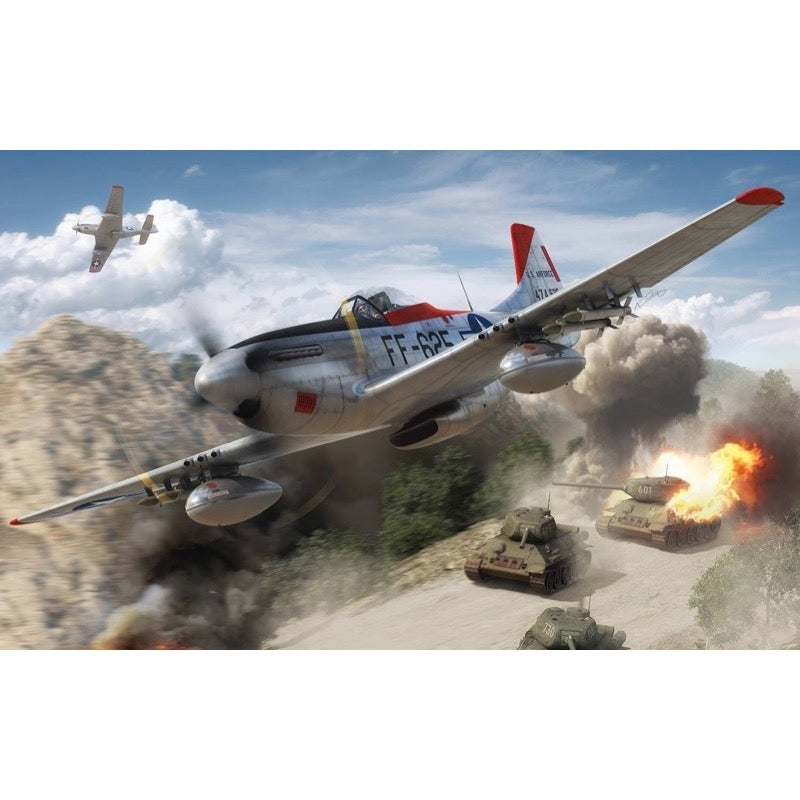
Airfix A05136 1/48 North American F-51D Mustang
25.00
$
<p>As arguably the finest fighter aircraft of WWII, the Mustang went on to be selected as the USAF primary piston engined fighter after the war, with all other types relegated to secondary roles, or withdrawn from service. The re-designation of USAF aircraft in 1948 saw the P for Pursuit change to F for Fighter, resulting in the Mustang becoming a North American F-51D.</p>
<p>Scheme 1: Rotation Blues 67th FBS Korea </p>
<p>Scheme 2: F51D 77 Squadron RAAF Korea 1951 </p>
<p>Scheme 3: J26 Mustang, Swedish Air Force</p>
<p>Produced under licensed. Boeing, Douglas, McDonnell Douglas, North American Aviation, A-4 Skyhawk, AH-64 Apache Longbow, B-17 Flying Fortress, B-25 Mitchell, C-47, DC-3, F-4 Phantom, P-51 Mustang, their distinctive logos, product markings, and trade dress are all trademarks of The Boeing Company.</p>
<h4>Includes</h4>
<ul>
<li>Sprues</li>
<li>Decals</li>
</ul>

Hasegawa H65770 1/72 VF-0B Macross Zero
21.00
$
<p>Really superb two-seater version of the VF-0 from "Macross Zero", molded with very fine detail by Hasegawa. Includes two pilot figures and a sheet of extremely sharp decals for a perfect finish.</p>
<h3>Specification</h3>
<ul>
<li>Model Length: 271mm</li>
<li>Model Width: 286mm</li>
<li>Parts: 119pcs.</li>
</ul>
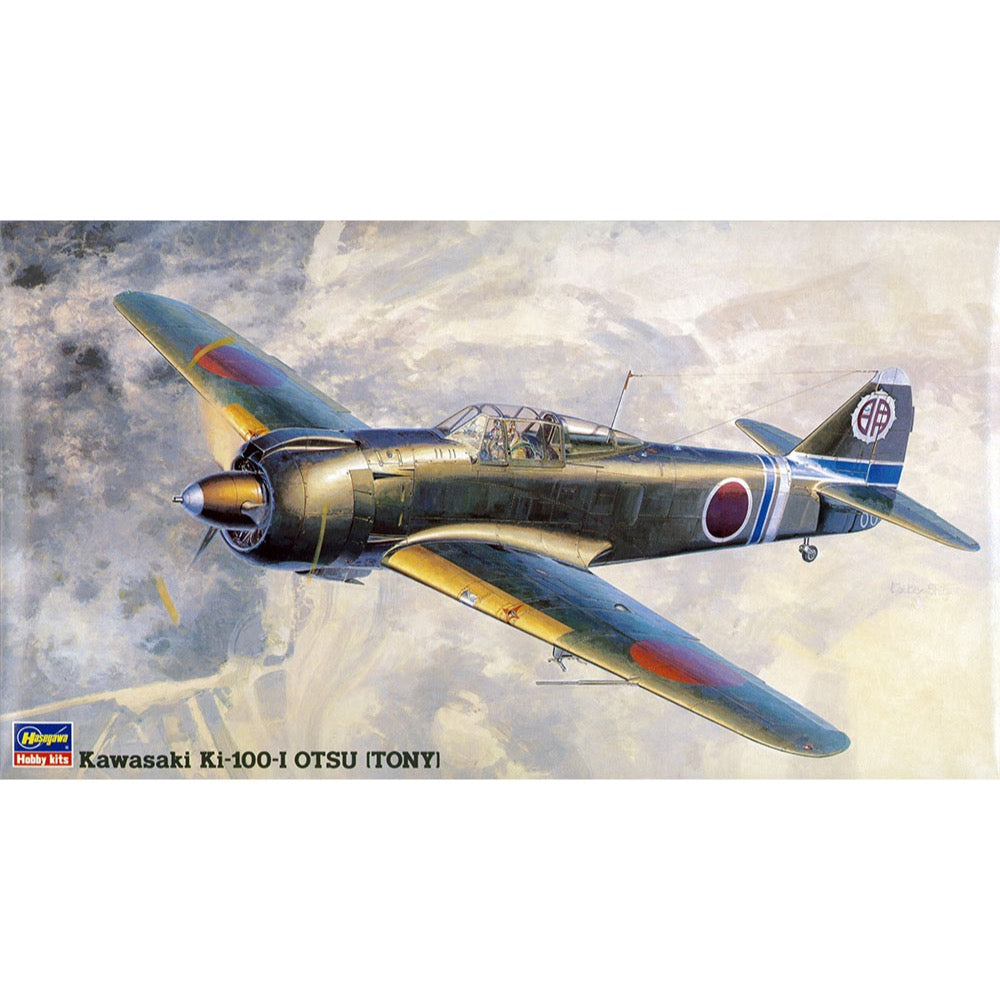
Hasegawa 19138 1/48 Kawasaki Ki-100-I OTSU Tony
17.00
$
<p>Kawasaki Ki-100 is a Japanese, single-engine fighter aircraft in a low-wing configuration with a classic tail and metal construction. The prototype's first flight took place in February 1945 and the aircraft entered the production line in the same year. Ki-100 was a very far-reaching modification of the Ki-61 aircraft, which primarily consisted of replacing the unreliable Ha-40 and Ha-140 inline engines with the Mitsubishi Ha-112-II KASEI radial engine with a power of 1,500 hp. Despite the problems, it was possible to start serial production, which was based on two aircraft models: Ki-100-I Ko and Ki-100-I Otsu. Ki-100s were used almost exclusively as fighters intercepting B-29 bomber raids on the Japanese Islands. About 400 aircraft of both versions were built. Technical data: length: 8.82m, wingspan: 12m, height: 3.75m, maximum speed: 580km/h, climb rate: 13.9m/s, maximum range: 2200km, maximum ceiling 11000m, armament: fixed - 2 Ho-103 machine guns caliber 12.7mm and 2 Ho-5 cannons caliber 20mm.</p>
<h3>Specification</h3>
<ul>
<li>Unassembled plastic model kit</li>
<li>Scale 1/48</li>
<li>Colors & tools not included</li>
</ul>


